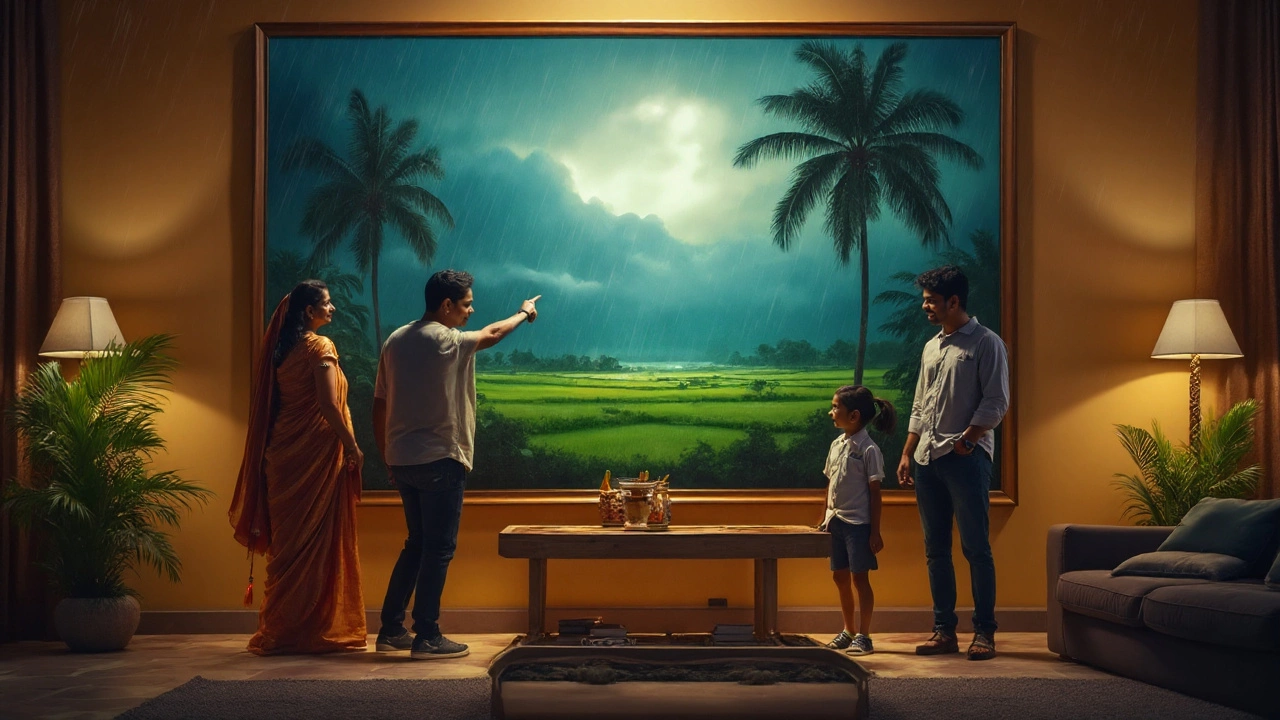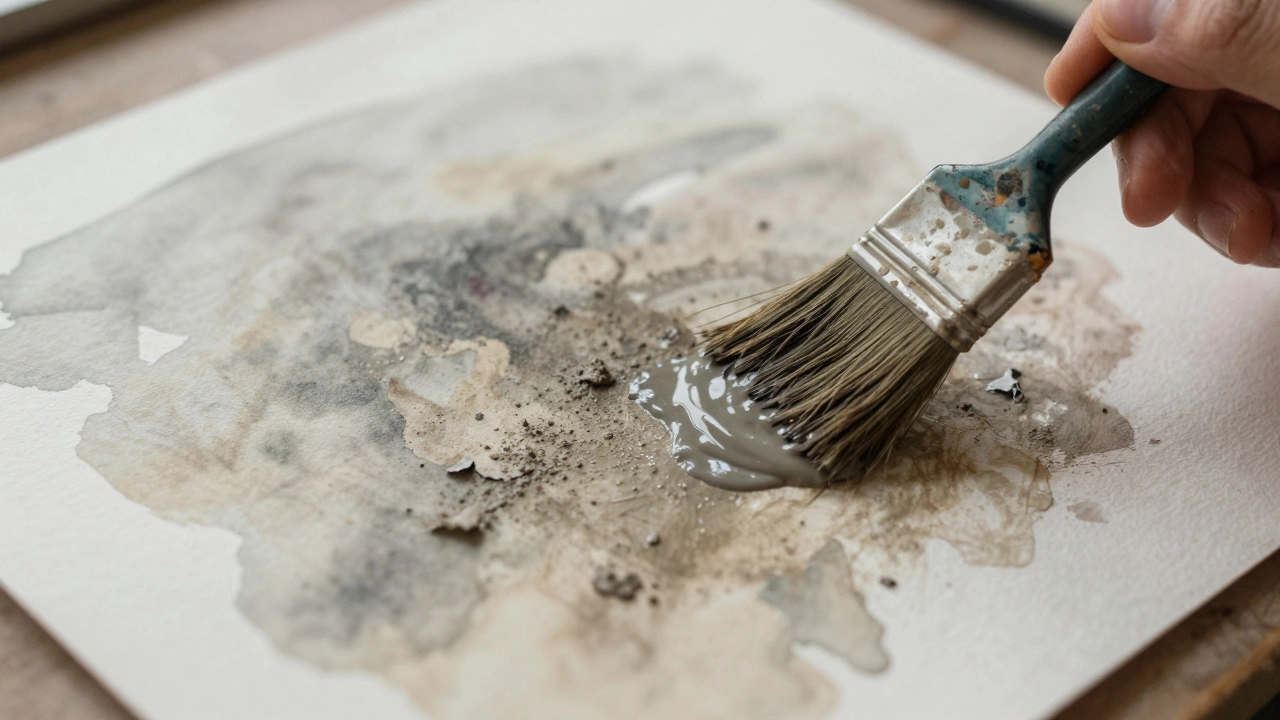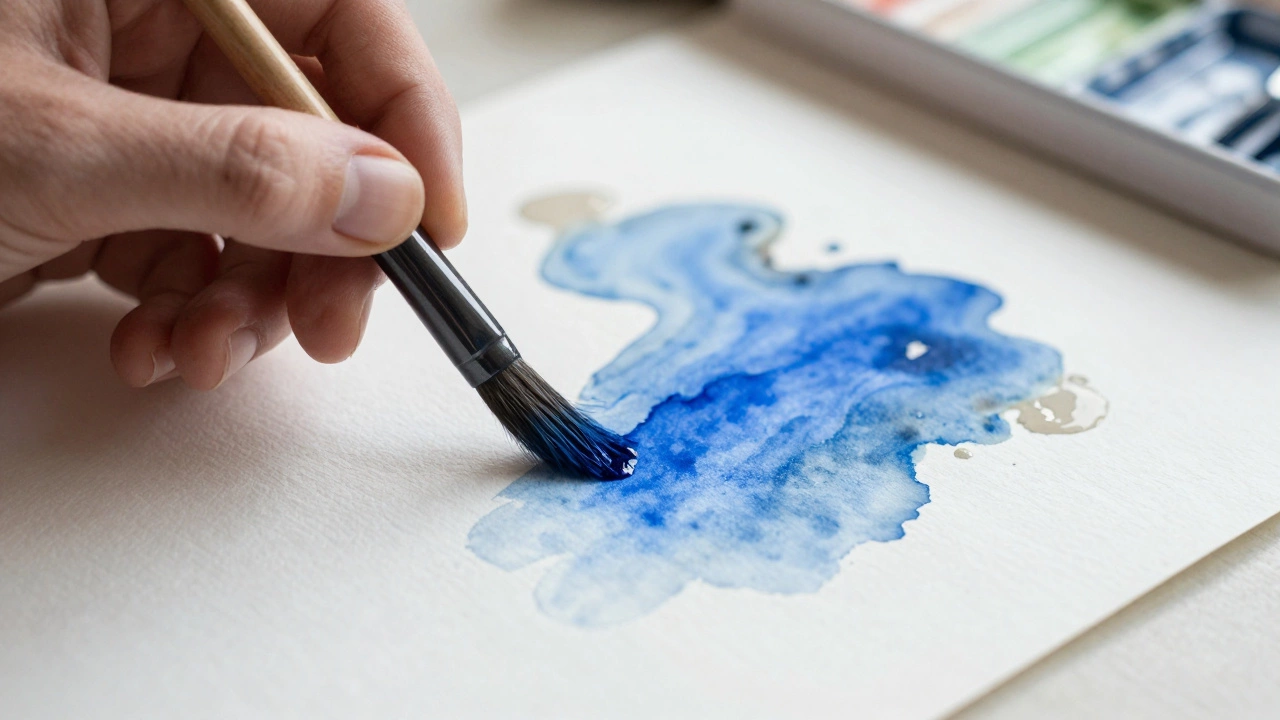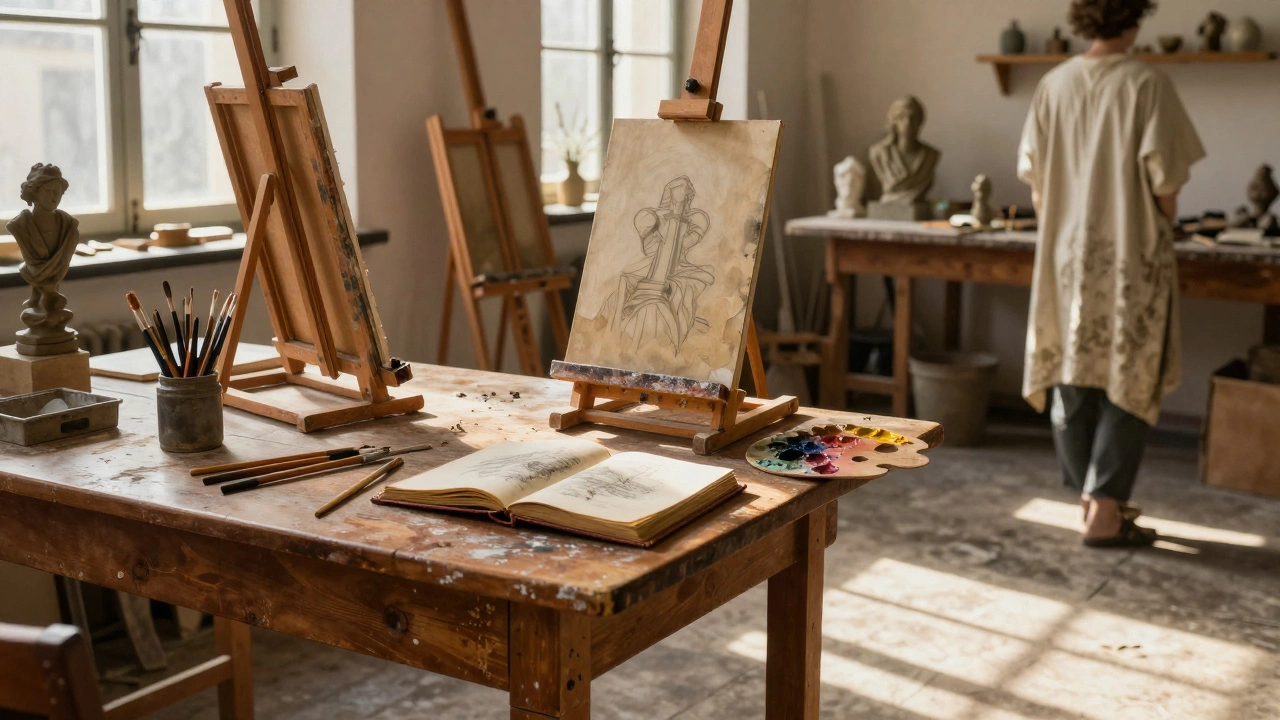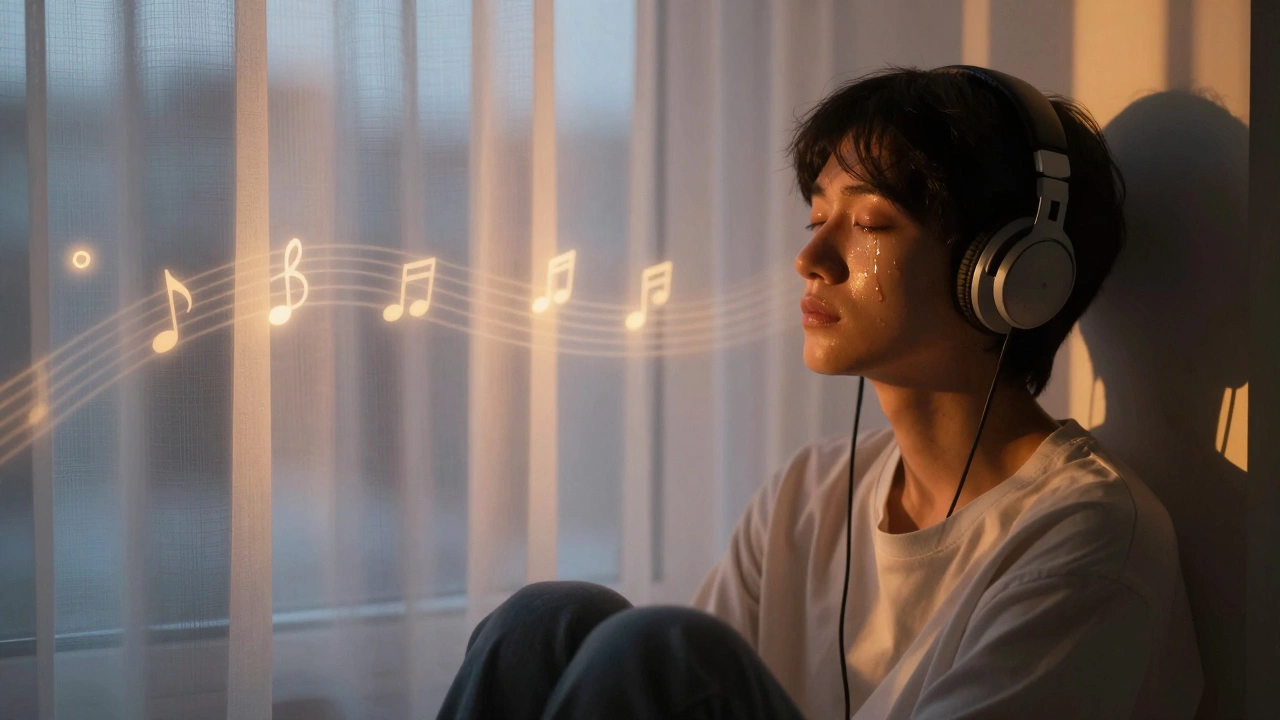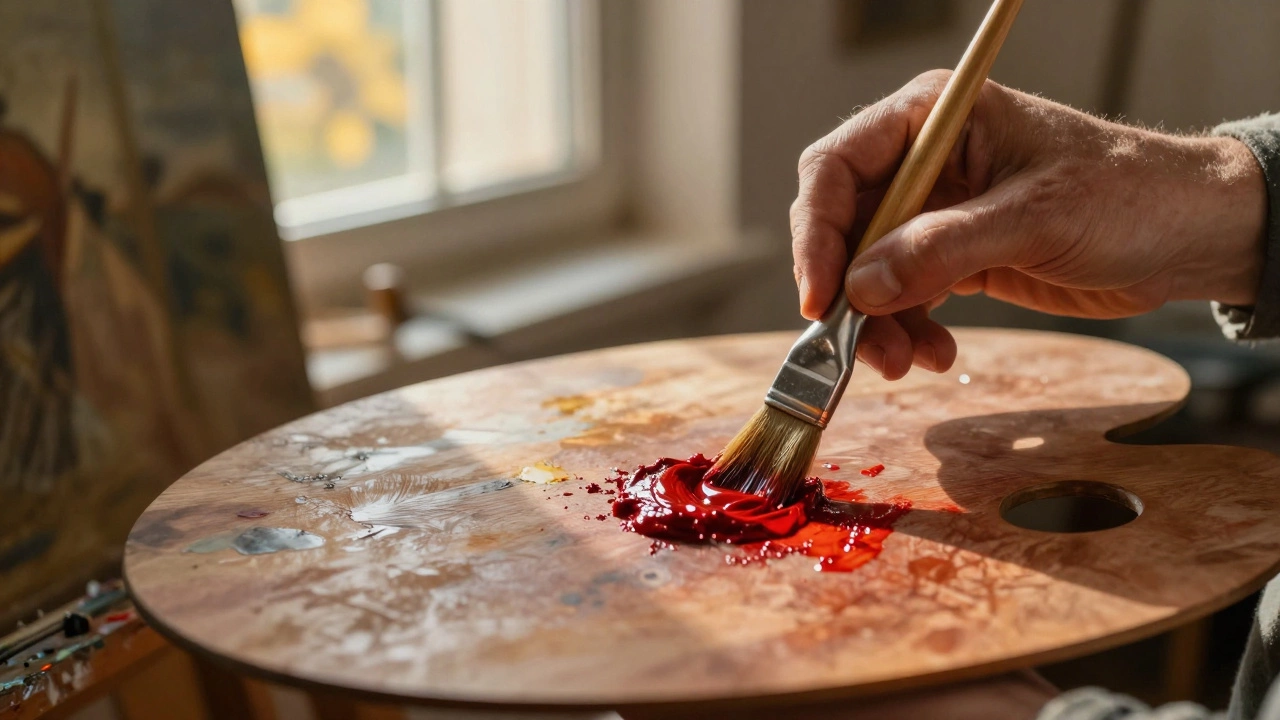Short answer: yes. The longer answer matters if you’re choosing what to buy, sell, or paint next. On Saturday, my daughter Eira tugged me toward a wall of shimmering gum trees at the Sydney Contemporary fair-two red dots already hanging beneath a fresh oil. People still stop for landscapes. They still pull out their phones, step back, imagine the piece at home. If you clicked here to get clarity, here’s the honest state of play and what to do with it.
- TL;DR: landscape paintings remain a safe, lively category in 2025-steady at auction, strong in galleries, booming in prints and editions.
- Why: biophilic design, calm color stories, and home-friendly formats keep demand high across budgets.
- Who’s buying: first-time buyers, interior designers, and mid-market collectors-especially for contemporary takes on classic scenery.
- How to act: choose mood > size > budget, verify condition/returns, and use trusted galleries or platforms; artists should price with a clear formula and edition discipline.
- Where to look: local galleries and fairs (Sydney Contemporary, The Other Art Fair) + online (Artsy, Bluethumb, Saatchi Art, 1stDibs) + charity auctions.
Are Landscape Paintings Still Popular in 2025? The Evidence
Popularity can be a slippery word, so let’s pin it to things we can see in the market: auction signals, gallery behavior, online demand, and interior design trends. Across those, landscapes hold their ground.
At Sydney Contemporary this year, I watched multiple landscapes go first-mid-sized oils, moody coastal works, and big eucalyptus studies that anchor a living room. That same pattern appears in many regional fairs: landscapes are often the “entry point” for new buyers because they feel familiar, sit well with neutral interiors, and still carry emotional punch.
Industry reports back this up. The Art Basel & UBS Art Market Report (2025) describes a resilient mid-market with consistent sales in representational painting. The Hiscox Online Art Trade Report (2024) noted rising online sales of prints and editions-where landscapes are a core subject. Artsy’s Gallery Insights (2025) highlights how decorators and first-time buyers continue to favor nature themes for residential projects. These aren’t hype pieces; they mirror what gallerists tell me in Paddington and Chippendale week after week.
Here’s a simple snapshot of signals from 2024-2025:
| Segment | 2024-2025 Signal | What’s Driving It | Cited Source |
|---|---|---|---|
| Contemporary landscapes under $10k | Rising | Home refresh post-reno, designer demand, giftable sizes | Artsy Gallery Insights 2025 |
| Mid-market original oils $10k-$50k | Steady | Collector confidence in representational work | Art Basel & UBS Art Market Report 2025 |
| Prints & editions (landscape subjects) | Strong | Lower entry price, better online framing/shipping | Hiscox Online Art Trade Report 2024 |
| Interior design briefs with nature themes | Strong | Biophilic design, calming palettes, hospitality/hotel installs | Design industry briefs; Deloitte Art & Finance 2023 (decor influence) |
| Australia-specific demand | Healthy | National identity, coastal living, outback motifs | Australia Council insights; local fair sales |
| Blue-chip historical landscapes at auction | Selective | Masterworks attract, mid-tier uneven | TEFAF Art Market Report 2024 |
“Selective” doesn’t mean weak. It means the top examples perform, while average works lag. That’s a useful rule if you’re buying: good gets better; generic gets ignored. Landscapes benefit from one more factor: they’re the easiest way to add scale without scaring a room. Big abstracts can dominate. Figurative work can feel personal. Landscapes go large and still soothe.
Online demand hasn’t cooled either. Search interest for nature and landscape art tends to spike around spring refresh cycles, and designers keep specifying “soft horizon” pieces for smaller apartments-especially here in Sydney where a 90 cm wide canvas can carry a whole living space.
Why Landscapes Endure: Psychology, Decor Trends, and Culture
Landscapes scratch two itches at once: they decorate and they decompress. There’s a well-cited thread in environmental psychology that humans relax when they see nature, even an image of it. That’s not just cozy lore.
“View through a window may influence recovery from surgery.” - R.S. Ulrich, Science (1984). Patients with views of trees recovered faster than those facing a wall.
Modern studies echo that: nature cues can reduce heart rate and perceived stress. In real homes, that translates to a painting becoming a breath-your eye rests on the horizon and resets. Designers talk about “visual breaks.” Landscapes deliver those without draining a room’s color story.
Decor trends line up, too. Biophilic design is not a fad; it’s shorthand for light, plants, natural wood, and imagery rooted in place. Even with the “quiet luxury” palette-linen, ecru, smoked oak-landscapes carry subtle color: stormy blues, sap greens, clay pinks from desert motes. They play nice with boucle sofas and travertine tables. Try that with neon glitch art and watch the room fight back.
There’s also culture and memory. In Australia, we hold entire conversations through land: the hard white of midday light, a gum’s ghostly trunk, the sea’s chopped cobalt. When Eira and I drive out toward the Blue Mountains, clouds snag on the ridges. Back home, a small plein-air study of that same ridge does something a photo never can-it’s slower, embodied. That “slowness” is part of why landscapes keep selling. People want their walls to hold time, not just show it.
A final piece: landscapes are generous to beginners and deep for experts. You can enjoy the mood and never learn the difference between ultramarine and phthalo. Or you can go down the rabbit hole of paper weights, linen grounds, silica gels, and varnish bloom. There’s room for both kinds of buyer, which keeps the category lively.
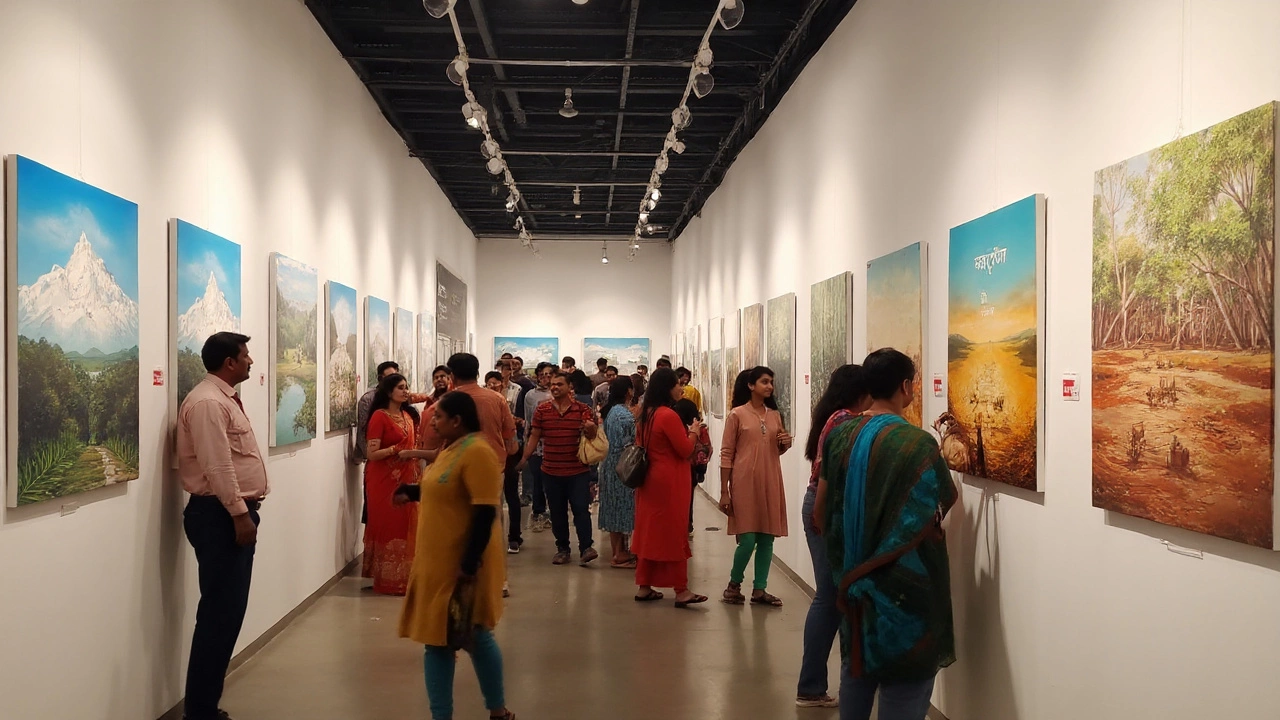
Buy, Collect, or Sell: A Practical Playbook
If you came here to act, this is your step-by-step. I’ll break it into three tracks: buying for a home, collecting more seriously, and selling (as an artist or owner).
Buying for your home
- Pick the mood before the motif. Calm (misty horizon), bright (sunlit coast), dramatic (storm front), or textural (impasto foliage). If your room is busy, go calmer; if it’s minimalist, you can go bolder.
- Measure the wall. Good rule: artwork width ≈ 0.57 × wall width. Over a sofa, aim for 2/3 the sofa width. Hang so the center sits ~145 cm from the floor.
- Set a budget band and stick to it. Under $500 (prints/editions), $500-$3k (emerging originals), $3k-$10k (established regionals), $10k+ (collectible names).
- Choose a medium: oils (buttery depth), acrylics (matte, quick-dry, crisper edges), watercolor (soft, atmospheric), pastel (velvety), mixed media (texture, collage). For humid apartments, acrylic can be easier to care for.
- Shortlist 5-8 works from galleries and platforms you trust (Artsy, Saatchi Art, Bluethumb in Australia, 1stDibs). Ask for video in daylight and detail shots of edges, signatures, and backs.
- Verify returns and condition. Look for 7-14 day returns for online buys. Check for warping, cracking, yellowing varnish, and mildew spots on the reverse.
- Plan framing and logistics. Float frame for canvas, museum glass for works on paper. Ask for crating on pieces over 120 cm. Insure shipping.
- Live with it virtually. Many galleries will superimpose a work on your wall from a photo. It’s worth it. If not, blue tape the footprint and step back.
Collecting with intent
- Define a thesis. e.g., “Contemporary Australian coastal abstraction, 2015-present.” A focus helps you learn value signals and avoid random buys.
- Follow a cohort, not just a star. Track 8-12 artists at similar career stages. Watch their group shows, editions, and secondary results.
- Document provenance from day one. Invoices, certificates, exhibition history. Photograph the back of each piece (labels matter later).
- Check edition discipline for prints. Standard sizes (like 25, 50, 100). Avoid “open editions” unless you love it purely decoratively.
- Think conservation. Oils prefer stable temps, watercolors hate sun. If you’re near the coast (hello, Sydney), silica packs and proper framing go a long way.
Selling (artists and owners)
- Price with a clear formula. For originals: (Materials + Hours × Rate) × Market Factor. Keep a consistent cm² or in² rate within a series so clients feel treated fairly.
- Choose channels that match the work. Textured oils photograph poorly-show in person (galleries, fairs). Graphic, high-contrast prints do well online.
- Keep edition rules tight. Defined edition size, consistent paper/printer, signed and numbered with a COA. Record the exact number sold.
- Explain the place, not just the paint. A short note on site (e.g., South Coast after storm) or method (plein air + studio glaze) helps buyers connect.
- Mind shipping and returns. Double-box works on paper. Corner-protect canvases. Offer a simple 7-day return-confidence sells.
Common pitfalls to avoid
- Buying a size that fits a wall now but not the room’s scale-measure furniture relationships.
- Ignoring lighting-north-facing rooms may need warmer palettes; direct sun is brutal on paper.
- Under-framing watercolors-use acid-free mounts and UV acrylic or museum glass.
- Chasing trends without love-you’ll tire of it. Landscapes work best when they echo your places.
Styles, Prices, and Where to Find Them (with Checklist + Mini‑FAQ)
Landscape is not one style. It’s a dozen moods under one roof. Here’s a quick guide to reading what you see-and spotting quality fast.
Popular styles in 2025
- Atmospheric minimalism: soft horizons, fog, big skies. Calm, flexible with decor.
- Painterly impressionism: broken color, visible brushwork, light studies. Great for coastal scenes.
- Textural expressionism: heavy impasto, palette knife leaves/bark. Photos never do it justice; see in person.
- Graphic modernism: flat planes, bold silhouettes, sunset gradients. Plays well with contemporary furniture.
- Photo-based mixed media: collage, transfers, digital underlayers with hand-finished paint. Edition discipline matters.
- Plein‑air studies: small, quick, on-site works. Fantastic energy; often more affordable.
Quality cues (spot them in 30 seconds)
- Edges: are they considered, or does the image awkwardly stop at the frame line?
- Values: squint. Does the composition hold with clear darks/lights?
- Surface: intentional texture, not accidental ridges or pilling.
- Color temperature shifts: warm light/cool shadow or vice versa. Flat color usually reads amateur.
- Back-of-canvas: clean, taut, no waves; labels and signatures present.
Price bands (typical, not rules)
- Fine art prints/editions: $150-$1,200 depending on size/edition.
- Small originals (≤40 cm): $400-$2,000 for emerging; higher for in-demand names.
- Mid originals (≈60-100 cm): $1,500-$6,000 common in Australian galleries.
- Large statement works (≥120 cm): $4,000-$20,000+ depending on artist and gallery tier.
Where to find landscapes now
- Galleries (Sydney: Paddington, Darlinghurst, Chippendale) and regional spaces across NSW-ask what’s in the stockroom; they often have more than the hang.
- Art fairs (Sydney Contemporary; The Other Art Fair) where you can compare styles and prices in a single afternoon.
- Online (Artsy, Bluethumb, Saatchi Art, 1stDibs) for breadth, returns, and easy filtering by size and palette.
- Charity/benefit auctions-good values and a cause; read buyer’s premiums carefully.
- Artist open studios-great for studies and works in progress at friendly prices.
Buyer’s one-page checklist
- Wall width, ceiling height, sofa/bed measurements noted.
- Mood chosen (calm/bright/dramatic/textural) and palette hints from the room.
- Shortlist of 5-8 works with dimensions, frame state, and return policy.
- Condition verified (front/back photos, edges, signature, varnish).
- Shipping, insurance, and framing cost added to budget.
- Hanging plan: center at ~145 cm, 50-75 mm breathing room on sides.
Mini‑FAQ
- Are landscapes out of fashion? No. They’re steady. Styles shift (minimal vs. painterly), but demand persists because they work in real homes.
- Oil or acrylic? Oils bring depth and slow drying; acrylics are lighter, less fussy, and often better for humid spaces. Choose by surface look and care needs.
- Do prints hold value? Limited editions from reputable artists can. Open editions are decor-first. If you want value, check edition size, paper, and printer.
- What size sells best? Mid-sizes (60-100 cm) move fastest-they fit apartments and houses. Diptychs are popular for long walls.
- How do I light it? Warm LEDs at 2700-3000K angled 30°. Avoid direct sun on works on paper.
- Are AI landscapes a thing? They exist, often as prints. Provenance and edition clarity matter even more; many collectors still prefer hand-made surfaces.
Next steps
- New buyer: visit one fair or three galleries this month; take photos of 10 landscapes you like and look for the common thread.
- Decorator: pre-measure walls, pre-select palettes, and request 48-hour home trials when possible.
- Artist: build one tight landscape series (6-12 works) with consistent size and pricing; photograph in natural light; test one fair and one online platform.
Troubleshooting
- Can’t decide? Print your shortlist as A4 sheets, tape them to the wall at scale. Your gut will make the call by day two.
- Color clash fears? Go monochrome or limited palette landscapes; texture will carry the interest.
- Budget tight? Start with a signed edition, then add a small original study from the same artist later.
- Shipping anxiety? Ask for a condition report and unboxing video. Insist on corner protectors and a double box.
Credibility notes
The signals above align with recurring findings in the Art Basel & UBS Art Market Report (2025), Hiscox Online Art Trade Report (2024), TEFAF Art Market Report (2024), Deloitte Art & Finance Report (2023), Artsy Gallery Insights (2025), and Australian market insights from the Australia Council. If you want to dig deeper, those reports are the best primary sources to read end to end.
If you’re still wondering whether landscape paintings are “in,” spend an hour in any busy Saturday gallery. Watch where people gather, where they slow down, what they imagine taking home. You’ll see it. The horizon still pulls.
